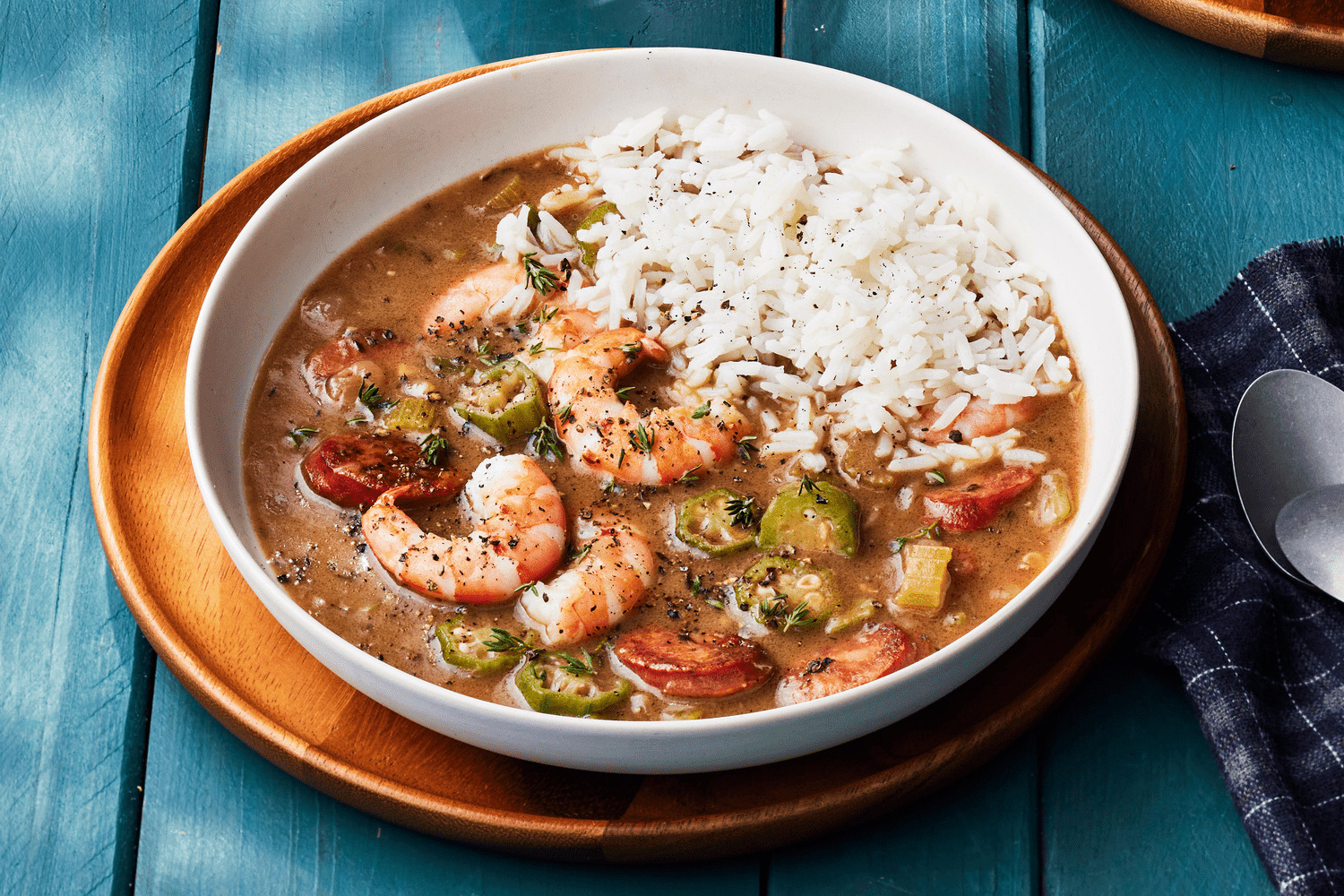
Gumbo, a quintessential dish from the heart of the Southern United States, is more than just a culinary delight—it’s a tapestry of history, culture, and community. With its roots intertwined in African, French, and Spanish traditions, gumbo has become a beloved symbol of Louisiana’s rich and diverse heritage. As we delve into 25 intriguing historical facts and numerical trivia about gumbo, we embark on a journey through time, taste, and tradition. From the dish’s cultural significance to its role in celebratory gatherings and charitable events, each trivia sheds light on the flavorful narrative of gumbo. So, join us as we explore the savory and storied world of this iconic Southern stew.
Gumbo is a stew with a rich and diverse history, primarily originating in the culturally vibrant state of Louisiana. This iconic dish is a flavorful fusion of African, French, and Spanish culinary traditions, which reflects the complex cultural heritage of the region. Known as the official state cuisine of Louisiana, gumbo has achieved an esteemed status and has transcended the boundaries of its birthplace to become a beloved dish across the United States and beyond.
The etymology of the word “gumbo” is a testament to the dish’s deep roots in African culture. The West African Bantu term “ki ngombo,” meaning “okra,” underscores the importance of this vegetable in the gumbo-making process. Okra, one of gumbo’s essential ingredients, not only contributes to the dish’s distinctive texture but also serves as a connection to its African heritage, as the plant was introduced to the United States through the transatlantic slave trade.
Gumbo’s history can be traced back to the early 18th century, particularly in the Mississippi Delta region. This historical timeline showcases the dish’s evolution as a cultural and culinary phenomenon. Its development was influenced by the intermingling of diverse cultures, including Native American, European, and African, reflecting the tapestry of Louisiana’s cultural heritage.
Gumbo’s ingredients are as diverse as its cultural origins. The combination of a thickening agent, typically roux (a mixture of flour and fat) or okra, with a selection of meats or seafood, such as chicken, shrimp, or andouille sausage, showcases the dish’s adaptability and versatility. The “Holy Trinity” of vegetables, consisting of onions, bell peppers, and celery, adds depth and flavor to the gumbo pot.
The record for the largest pot of gumbo ever made, weighing over 5,000 pounds, is a testament to the communal spirit and love for gumbo in Louisiana. This monumental achievement was a celebration of the dish’s cultural significance and its role in bringing people together for shared culinary experiences.
Gumbo’s categorization into Creole and Cajun variations highlights the regional diversity of the dish. Creole gumbo, featuring the use of tomatoes, reflects the urban and multicultural influences of New Orleans. In contrast, Cajun gumbo, without tomatoes, leans toward the rural and rustic traditions of the Louisiana bayous. This distinction adds depth to the appreciation of gumbo’s regional nuances.
The “World Championship Gumbo Cookoff” in New Iberia, Louisiana, is the world’s largest gumbo festival, serving as a testament to the dish’s enduring popularity and the sense of community it fosters. The competition and celebration of gumbo at this event showcase the passion and creativity of those who embrace this iconic Southern dish.
Gumbo Z’herbes, a vegetarian variation of gumbo, offers a delicious nod to the importance of greens and plant-based ingredients in Southern cuisine. This green gumbo exemplifies the cultural adaptability of the dish, providing options for those with dietary preferences or restrictions.
The introduction of okra to the United States through the transatlantic slave trade underscores the complex history and influences that have shaped gumbo. Okra’s incorporation into the dish not only adds flavor but also honors the African heritage that contributed significantly to the development of the dish.
The first written gumbo recipe, found in Abby Fisher’s 1881 cookbook, “What Mrs. Fisher Knows About Old Southern Cooking,” marked a pivotal moment in gumbo’s documentation and preservation. This historical record has allowed the dish to be passed down through generations, ensuring its enduring presence in Southern and American culinary traditions. Fisher’s contribution to documenting the recipe is a valuable piece of culinary history.
In 2004, the U.S. Congress passed a bill declaring gumbo an important symbol of cultural significance in the United States. This recognition by Congress underscores gumbo’s role as a symbol of cultural heritage and unity. It highlights the dish’s ability to bring together people from diverse backgrounds, emphasizing the cultural importance of gumbo in American society.
Gumbo file powder, made from ground sassafras leaves, is a unique ingredient that not only serves as a thickening agent but also imparts a distinctive flavor to the dish. This culinary innovation showcases the inventiveness of Southern cooking and its reliance on indigenous ingredients like sassafras.
The practice of cooking gumbo in large cast-iron pots over an open flame is a tradition that harkens back to the roots of Southern cuisine. It highlights the historical methods used by early cooks and the enduring connection between gumbo and outdoor communal gatherings, such as gatherings around the campfire or at festivals.
Gumbo served over rice is a culinary practice that reflects the influence of West African cuisine. The combination of rice with the flavorful and hearty gumbo sauce has its roots in the African culinary traditions brought to the United States through the transatlantic slave trade.
Gumbo’s association with Mardi Gras celebrations emphasizes the dish’s festive and communal nature. It is a popular choice during the lively and colorful festivities of Mardi Gras, aligning with the spirit of celebration and indulgence that characterizes this annual event in Louisiana.
The largest serving of gumbo on record, weighing over 3,710 pounds, is a testament to the immense popularity and adoration of gumbo as a culinary treasure. Such colossal servings emphasize the communal aspect of gumbo, as they are often prepared for and shared at special events and celebrations.
The Guinness World Record for the longest gumbo, measuring over 1,000 feet, demonstrates the scale to which this beloved dish can be taken. Such feats of culinary achievement underline the passion and dedication of those who hold gumbo close to their hearts and who are willing to go to great lengths to celebrate it.
Chef Paul Prudhomme’s role in popularizing gumbo in the 1980s reflects the impact of individuals in shaping culinary trends. His efforts brought gumbo to the forefront of American cuisine, introducing it to a wider audience and contributing to its status as a beloved Southern classic.
The “Gumbo Gala” event in Birmingham, Alabama, is a heartwarming example of how gumbo can be used to benefit charitable causes. This annual competition and fundraiser showcases the power of food to bring people together for a meaningful purpose, while also celebrating the diversity and creativity of gumbo recipes.
Gumbo’s connection to the celebration of the African, French, and Spanish heritage of Louisiana, especially during events like “Gumbo Fest” in Opelousas, reinforces the dish’s role as a cultural ambassador. These festivals serve as opportunities to embrace and honor the multiethnic history of gumbo, promoting cultural understanding and unity through food.
The main ingredients in a classic seafood gumbo, such as shrimp, crab, and oysters, reflect the bounty of the Gulf of Mexico and the vital role of seafood in Louisiana’s culinary heritage. The use of these fresh and locally sourced ingredients adds a rich and distinctive flavor to the gumbo, making it a cherished and uniquely coastal variation of the dish.
The rich, dark roux used in gumbo is a labor-intensive element made by slowly cooking flour and fat until it reaches a deep brown color. This time-honored technique is a hallmark of many gumbo recipes and is indicative of the commitment to capturing the dish’s rich and complex flavors.
In 2018, the city of Opelousas, Louisiana, celebrated its 300th birthday with a giant gumbo pot measuring over 6 feet in height. This grand celebration not only highlighted Opelousas’ historical significance but also paid homage to gumbo as a symbol of community and culture. The oversized gumbo pot emphasized the importance of the dish in commemorating milestones and fostering a sense of togetherness.
A popular variation of gumbo, known as “Gumbo Ya-Ya,” features the addition of chicken and smoked sausage, enhancing the dish’s robust flavor profile. This delightful variation underscores gumbo’s adaptability and the way it can be personalized to suit individual tastes and regional preferences.
“National Gumbo Day,” celebrated on October 12th, is a day dedicated to recognizing and enjoying the beloved Southern dish. This designated holiday is a testament to the enduring love and appreciation for gumbo in the United States, a day for gumbo enthusiasts to come together and savor the flavors of this cultural icon. It also provides an opportunity to share the traditions and recipes that have made gumbo an integral part of American culinary heritage.








